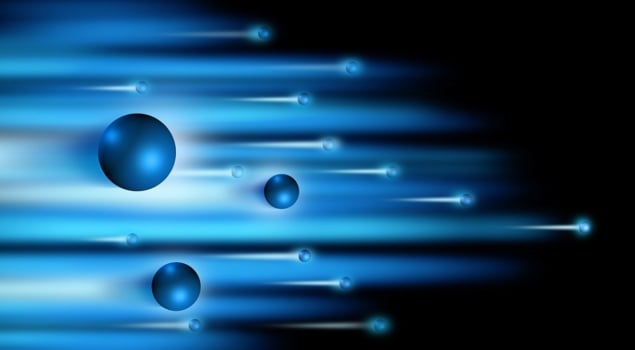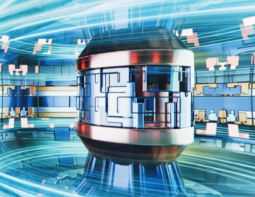
Terahertz radiation has been used to reduce the timing jitter of ultrashort pulses of relativistic electrons. This was achieved independently by two teams, one in China led by Dao Xiang at Shanghai Jiao Tong University and the other in the US led by Emilio Nanni at SLAC National Accelerator Laboratory. Their work could allow researchers to generate high-quality electron beams at far lower costs than current radio-frequency (RF) techniques, allowing for advanced studies of atomic-scale structures and femtosecond-scale processes.
Electron beams comprising ultrashort pulses are rapidly advancing the capabilities of today’s most cutting-edge imaging techniques. Currently, they are generated using RF techniques, which can compress bunches of electrons so that their “heads” and “tails” are separated by less than 10 fs as they move. Yet as researchers’ demands for ever shorter and brighter pulses continue to grow, the RF equipment used to generate them is barely keeping up. Not only is the apparatus bulky and expensive; it causes the distribution of pulse arrival times at a target to become spread out, increasing the timing uncertainty, or jitter, of the beam. So far, this has hindered the progress of many studies requiring the best possible ultrashort pulses.
Velocity boosts
Using similar approaches, both Nanni’s and Xiang’s teams discovered that bunches of electrons produced by a photocathode can be compressed, and their timing jitter reduced, by replacing RF signals with terahertz waves. Their setups included two terahertz sources that are linearly polarized in parallel directions. The waves interact with electron bunches as they pass through two separate waveguides. During this interaction, each pulse imparts velocity boosts that increase as the beam passes through. This compresses the electron bunches by speeding up their tails more than their heads. In addition, since the same laser is used to drive the photocathode and both terahertz sources, each radiation-bunch interaction is highly synchronized, reducing the jitter of the beam.

Intense terahertz pulses generated with unprecedented efficiency
In each case, beams were compressed to lengths of under 40 fs – not quite as short as those reachable through RF structures used today for electron pulse generation. However, the jitters produced in both studies were reduced to just around 30 fs – a significant improvement on previous techniques. All the while, the apparatus necessary for this is far more affordable than today’s bulky RF-based generators.
Although the teams did not collaborate, their similar methodologies both clearly demonstrated the unprecedented timing resolution afforded using terahertz radiation. With further improvements, their approach could soon satisfy the growing demand for intense, ultrashort electron beams. Possible applications include ultrafast electron diffraction, which can be used to capture images of atomic-scale structures. It could also be used to study the femotosecond-scale processes that play out within materials including semiconductors, yielding important new insights into their physics.
The Shanghai Jiao Tong University and SLAC studies are described in separate papers in Physical Review Letters.



